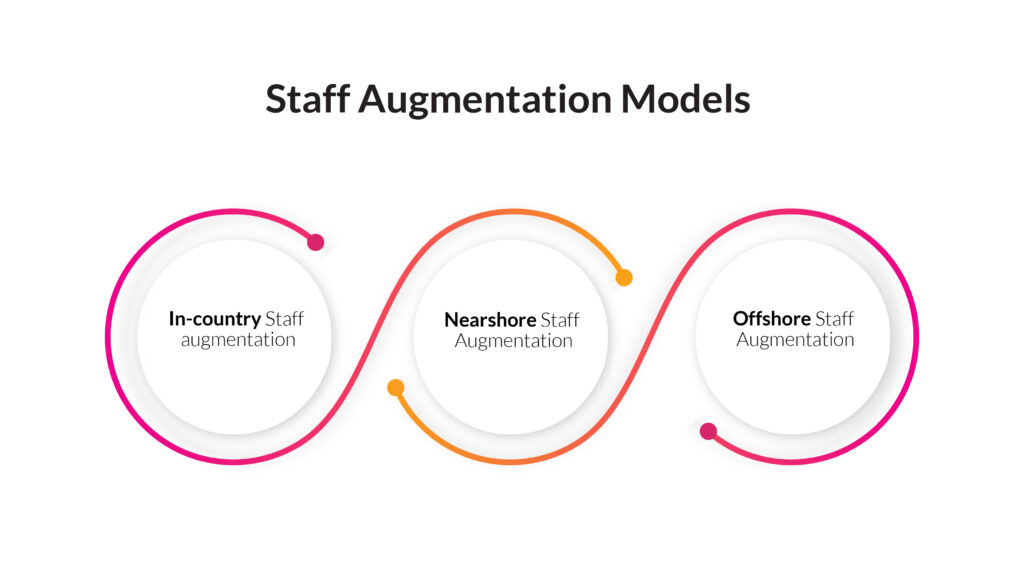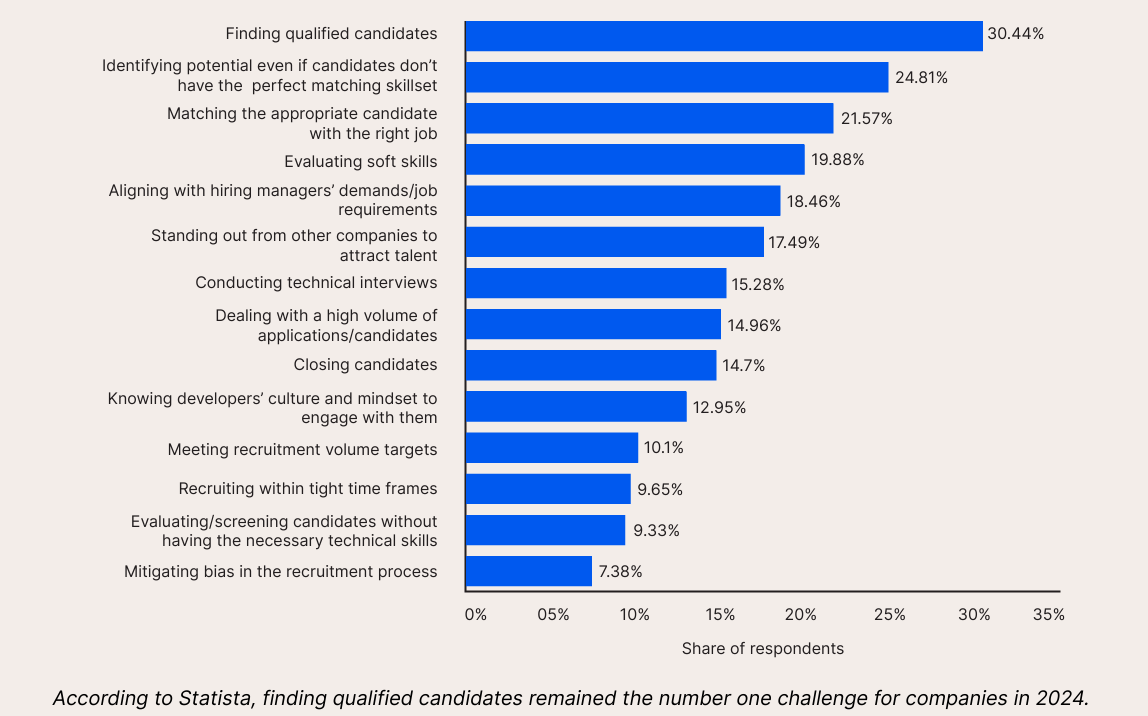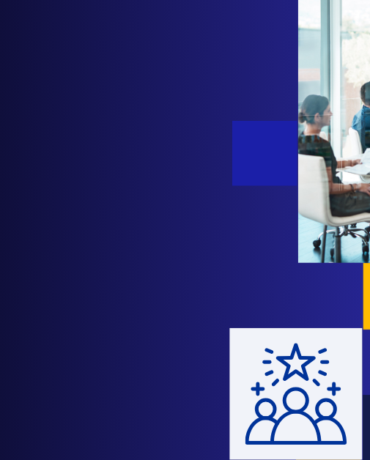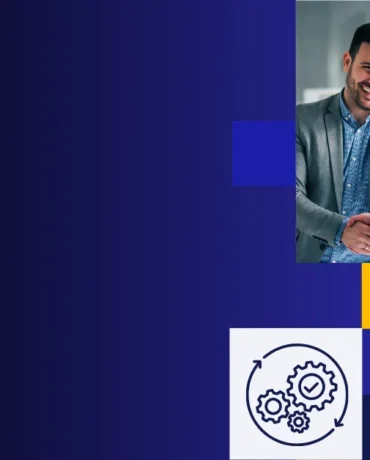Work is like a rollercoaster right now, filled with surprises and buzz. The usual job roles and how we do things are getting a major facelift. To stay in the game, businesses need to roll with the changes. As we gear up for 2025, understanding these emerging IT staff augmentation trends becomes crucial to seeking a competitive advantage through strategic talent acquisition.
SpendEdge predicted a $81.87 billion investment in IT staff augmentation by 2025 from companies around the globe. That’s some severe acknowledgment!

Source: Quintagroup
What is IT Staff Augmentation?
IT staff augmentation is a flexible outsourcing strategy that allows companies to hire skilled technology professionals on a temporary or project basis to supplement their existing teams. Unlike traditional hiring, this approach provides immediate access to specialized expertise without the long-term commitments and overhead costs associated with permanent employees.
Current Market Overview: Explosive Growth in 2025
The IT staff augmentation market is experiencing remarkable expansion, with the global market projected to reach $857.2 billion by 2031, representing a 13.2% CAGR. This explosive growth reflects the increasing demand for agile workforces and specialized technical skills across industries. This unprecedented expansion is driven by digital transformation initiatives, skill shortages, and the need for faster project delivery.
According to Statista, ‘finding qualified candidates” is still the number one challenge for companies in 2024

Top IT Staff Augmentation Trends Shaping 2025
Now, let’s vibe with the trends we’re likely to see in this scene come 2025:
AI Integration Revolutionizes Talent Acquisition
Artificial intelligence has become the cornerstone of modern IT staff augmentation trends. Over 70% of businesses will use AI tools to streamline hiring in 2025, transforming how companies identify, assess, and onboard technical talent.
Key AI Applications Include:
- Automated resume screening and candidate matching
- AI-powered interview scheduling and assessment
- Predictive analytics for talent forecasting with 85% accuracy
- Real-time skills assessment through AI-driven simulations
- Generative AI adoption by 92% of Fortune 500 companies for recruitment tasks
The emergence of specialized AI roles has created new staffing demands, including data annotators, ML engineers, data scientists, and prompt engineers. These positions require unique skill sets that traditional hiring processes struggle to identify and evaluate effectively.
Remote Work Keeps Rocking
Remember when remote work was just a temporary fix? Well, now it’s like the rock star of the work world. Because of the COVID-19 situation effects, many of us got a taste of working from our happy places, and a good chunk of us decided to stick with it even after the crisis calmed down
The shift toward remote work has fundamentally altered IT staff augmentation trends, with 70% of tech firms now hiring remotely. This transformation enables companies to access global talent pools without geographical constraints, significantly expanding their options for specialized expertise.
Remote Work Benefits:
- 68% of software professionals report increased productivity when working remotely
- Access to global talent without relocation costs
- 24/7 development cycles through strategic time zone management
- Reduced operational overhead and office space requirements
Major technology companies, including Google, Microsoft, Amazon, and Coinbase, have embraced flexible working models. Additionally, fully remote organizations like GitLab, Quora, and DuckDuckGo demonstrate the viability of distributed teams.
Global Outsourcing Gets Strategic
Picture this: businesses spreading their wings, hiring outsourced talent for specific gigs. It’s not just about offloading tasks anymore; it’s a strategic move to tap into diverse skills from all corners of the globe.
IT staff augmentation, in the form of software outsourcing, is like playing chess with your workforce – a smart move to get the skills you need while keeping things running smoothly.
Read more Lean outsourcing: Reducing delays and rework
SMB Market Expansion and Adoption
Small and medium-sized businesses are increasingly embracing IT staff augmentation trends, with 21% of small businesses now intending to hire nearshore companies, up from 15% the previous year. This represents a 40% increase in adoption among SMBs, driven by several key factors:
SMB Advantages:
- Cost predictability through fixed contract rates
- Access to enterprise-level expertise without full-time commitments
- Reduced time-to-market for product development
- Ability to pivot quickly based on market conditions
For startups and bootstrapped companies, staff augmentation often represents the only viable path to securing experienced technical teams while preserving capital for product development.
Specialized Skills in High Demand
The winds of change are blowing in a demand for skills that are all about tech. Forget the usual stuff – now it’s about being tech-savvy with a touch of artificial intelligence, automation, and other cutting-edge wizardry. With A.I. gearing up to create a whopping 97 million new job roles by 2025, having these skills is like having the golden ticket. Companies are turning to staff augmentation to stay in the game, grabbing the expertise they need to keep it cool and competitive. The IT staff augmentation trends in 2025 reflect growing demand for specialized technical expertise across emerging technologies:
Cloud Computing Expertise
With the global cloud computing market expected to reach $832 billion by 2025, demand for certified cloud professionals continues to surge. Organizations leverage staff augmentation to access experts for:
- Cloud architecture design and security implementation
- Cost optimization through resource monitoring and auto-scaling
- Migration planning and execution
- Performance optimization and compliance management
Cybersecurity and Emerging Technologies
64% of emerging technologies face adoption challenges due to skill gaps, making staff augmentation critical for accessing expertise in:
- Advanced cybersecurity and compliance frameworks
- Blockchain and Web3 development
- IoT and mobile application development
- AI and machine learning implementation
Outcome-Based Engagement Models
A significant shift in IT staff augmentation trends involves moving from time-based to results-driven contracts. Organizations increasingly evaluate providers based on project deliverables and measurable outcomes rather than simply filling positions. This performance-based approach proves particularly effective for:
- Cloud migrations and infrastructure projects
- Cybersecurity audits and compliance initiatives
- MVP development and rapid prototyping
- High-impact, short-term technical initiatives
Future Predictions: What’s Next for IT Staff Augmentation
Hybrid Human-AI Workflows
By 2026, 65% of tech firms plan to augment teams specifically for AI and Web3 projects, with hybrid models combining human expertise and AI tools becoming standard practice. This evolution will enhance productivity while maintaining the strategic thinking and creativity that human professionals provide.
Advanced Predictive Analytics
The integration of sophisticated forecasting tools will enable organizations to predict staffing needs with unprecedented accuracy. Companies will leverage business metrics, seasonal trends, and market conditions to optimize their augmentation strategies proactively.
Ethical AI Implementation
As AI becomes more prevalent in hiring processes, organizations will prioritize ethical frameworks and bias prevention. Regulations like the EU AI Act will mandate transparency in AI-driven hiring decisions, ensuring fairness and compliance across the industry.
Benefits of Following IT Staff Augmentation Trends
Cost Efficiency and Flexibility
Organizations adopting current IT staff augmentation trends report significant cost savings compared to traditional hiring models. The pay-as-you-go structure eliminates overhead costs, including benefits, office space, and long-term commitments, while providing access to top-tier talent.
Accelerated Time-to-Market
Companies leveraging staff augmentation can reduce time-to-hire from 30-90 days for in-house hiring to just 1-2 weeks, enabling faster project initiation and completion. This acceleration proves crucial in competitive markets where speed determines success.
Access to Global Talent Pools
The remote-first approach inherent in modern IT staff augmentation trends provides access to specialized expertise regardless of geographical location. Organizations can tap into emerging tech hubs and established talent markets to find the exact skills needed for their projects.
Implementation Best Practices for IT Staff Augmentation
Strategic Planning and Needs Assessment
Successful implementation of IT staff augmentation trends begins with a thorough needs assessment and strategic planning. Organizations should:
- Identify specific skill gaps and project requirements
- Define clear objectives and success metrics
- Establish communication protocols and project management frameworks
- Create integration plans for seamless team collaboration
Partner Selection and Evaluation
Choosing the right staff augmentation provider requires careful evaluation of:
- Technical expertise and industry experience
- Track record of successful project delivery
- Cultural alignment and communication capabilities
- Scalability and flexibility in team composition
Performance Monitoring and Optimization
Continuous monitoring and optimization ensure maximum value from staff augmentation investments. Organizations should implement:
- Regular performance reviews and feedback mechanisms
- Agile project management methodologies
- Knowledge transfer protocols
- Long-term relationship-building strategies
Challenges and Considerations
Security and Compliance
As organizations embrace IT staff augmentation trends, maintaining data security and regulatory compliance becomes increasingly complex. Companies must implement robust security protocols, comprehensive NDAs, and regular compliance audits when working with external teams.
Cultural Integration
Successfully integrating augmented staff with existing teams requires careful attention to cultural alignment and communication protocols. Organizations must invest in onboarding processes and team-building activities to ensure cohesive collaboration.
Quality Assurance
Maintaining consistent quality standards across augmented teams requires clear documentation, standardized processes, and regular quality assessments. Companies should establish comprehensive quality frameworks and continuous improvement mechanisms.
Embracing the Future of IT Staffing
The IT staff augmentation trends shaping 2025 represent a fundamental shift toward more flexible, efficient, and strategic approaches to technical talent acquisition. Organizations that embrace these trends, from AI-powered hiring to remote-first models and outcome-based engagements, will gain significant competitive advantages in terms of cost efficiency, speed to market, and access to specialized expertise.
Frequently Asked Questions
IT staff augmentation is a flexible outsourcing strategy that allows companies to hire skilled technology professionals on a temporary or project basis to supplement their existing teams. Unlike traditional hiring, this approach provides immediate access to specialized expertise without the long-term commitments and overhead costs associated with permanent employees.
The IT staff augmentation market is experiencing explosive growth, valued at $299.3 billion in 2023 and projected to reach $857.2 billion by 2031, representing a compound annual growth rate (CAGR) of 13.2%. Some projections suggest even more aggressive growth, potentially reaching $1,218.86 billion by 2033.
The key trends include:
-
AI integration in talent acquisition (used by over 70% of businesses)
-
Remote-first hiring models (adopted by 70% of tech firms)
-
SMB market expansion (21% increase in small business adoption)
- Global Outsourcing Gets Strategic
-
Specialized skills demand for cloud computing and cybersecurity
-
Outcome-based engagement models focusing on results rather than time
AI is revolutionizing the industry through:
-
Automated resume screening and candidate matching with 85% accuracy
-
AI-powered interview scheduling and assessment
-
Predictive analytics for talent forecasting
-
Real-time skills assessment through AI-driven simulations
-
Creation of new specialized roles like data annotators, ML engineers, and prompt engineers
The most sought-after skills include:
-
Cloud computing expertise (market expected to reach $832 billion by 2025)
-
Cybersecurity and compliance specialists
-
AI and machine learning engineers
-
Blockchain and Web3 developers
-
Data scientists and data engineers
-
IoT and mobile application developers
Companies can achieve significant cost savings through:
-
Reduction of up to 53% in development costs compared to in-house teams
-
Elimination of overhead costs including benefits, office space, and training
-
No long-term employment commitments
-
Access to specialized skills without permanent hiring costs
-
Faster project completion reducing overall expenses

